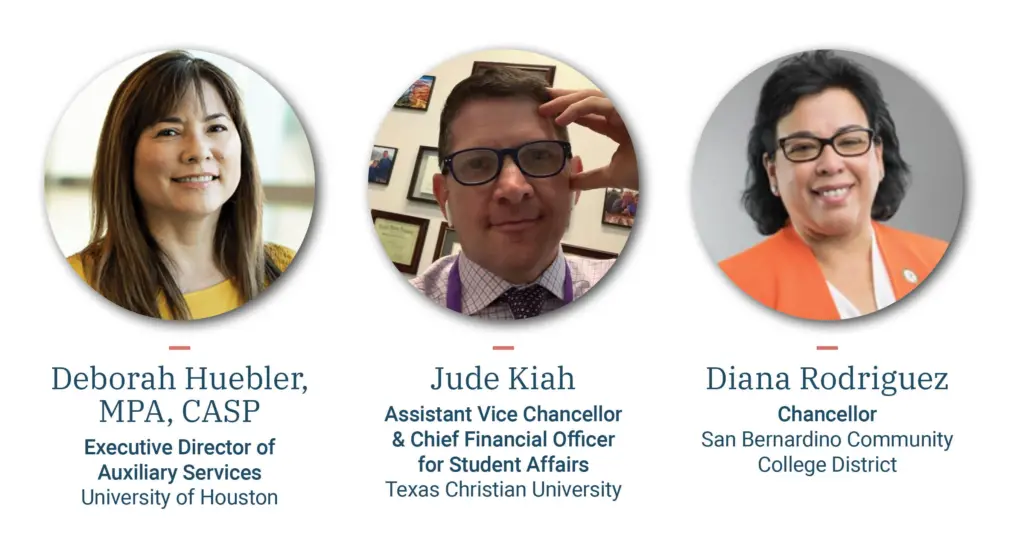
4 Best-in-Class Strategies to Launch a Course Materials Program that Improves Student Outcomes
By Ryan Petersen, President, Follett Higher Education
At the end of last year, I attended NACAS C3X where I had the pleasure of moderating a panel discussion featuring three higher ed trailblazers who oversaw the successful launches of Inclusive and Equitable Access programs on their campuses:

Each leader had an inspiring story to share about the impact of these programs: what the programs meant to their institution, how they got the right people engaged, and how, with Follett’s help, they implemented a course materials solution that saves students money while increasing access to the resources students need to be successful.
Just like no two campuses are the same, no launch story follows the same path. But each leader agrees that these four best practices are essential for getting an IA or EA program off the ground:

Whether you have leadership support from the start, or are driving change from the bottom-up, it’s important to answer a few questions to ensure your vision is clearly articulated.
- How does an IA or EA program tie into your campus’s underlying goals for the next five to ten years?
- How does the program support your school’s mission?
- How will the program support goals around DEI and improved outcomes?
The clearer your initial goals, and your sense of the project’s scope, the easier it will be to engage champions across campus and garner support from leadership.
Deborah Huebler, Executive Director of Auxilliary Services at the University of Houston, says the institution’s aim is “to provide a top tier inclusive educational experience to all.” UH’s core stakeholders felt an Inclusive Access program – in which digital materials are included in a student’s tuition and are provided on day one on a course-by-course level – “helped contribute to those [student success] goals.”
Similarly, Diana Rodriguez, Chancellor at San Bernardino Community College District, felt that an Equitable Access program (implementing the model across all courses offered) touched “every single part” of their goal to be a regional leader in Diversity, Equity, Inclusion and Accessibility (DEIA), while remaining fiscally responsible. San Bernardino CCD’s Equitable Access was the first such program among all California community colleges, and has served 20,000 students in the first year of its implementation, saving students over $2 million, compared to the cost of new materials.

Prioritizing clear communication strategies that address concerns or misconceptions head-on is important to securing stakeholder buy-in across all roles: enrollment, finance, auxiliary services, faculty, student government, and more. Huebler and her team were approved by the provost to move forward with an IA pilot after months of meetings with decision-makers to determine if IA was the right model for UH. As of Spring 2023, their Inclusive Access program, called the Cougar Textbook Access program, is now a “permanent part of the institution.”
“You have to learn the language each group speaks,” said Jude Kiah, who spearheaded the Equitable Access program at Xavier University before joining the leadership team at Texas Christian University. “Find out who needs to sit at the table, and who can move the needle.” Chancellors and presidents will get on board once you’ve built allies and advocates on campus—and a great way to do that is to show how IA and EA benefit students. “At San Bernardino, the student leaders were the allies—they were getting faculty excited about it,” said Chancellor Rodriguez.

Many schools like to start with a pilot program—to see how IA operates in a handful of different courses. After the pilot, focus groups and student surveys are a great way to gauge student response, as well as to identify what can be improved for the full implementation of the new course materials model.
At University of Houston, the team discovered that students loved the convenience of the IA model above all, and freshman as well as transfer students found the “day one” access to course materials invaluable as they were adjusting to college life. Huebler’s team also ran a survey to supplement the focus group findings—85% of UH students said they would like all their classes offered in this mode.
Jude Kiah also noted that a survey confirmed Xavier’s hopes about what improved course material access would mean for their students, and for prospects: “85% listed Inclusive Access in the top three reasons as to why they came to Xavier,” said Kiah.

Every school will learn something different from the early days of a program. Answers to questions about timing, distribution, and about the right communication cadence and method for your students tend to surface once you get things moving.
Often what gives academic leaders pause are logistics concerns. Rodriguez created an advisory group to determine how to operationalize their model across the entire student body once it had been approved. “Actualizing and putting things into place took time—about six months to work out the bugs and the kinks. But I am happy to say by the first day of classes, we got books into every students hands, and that’s something our district is very proud of.”